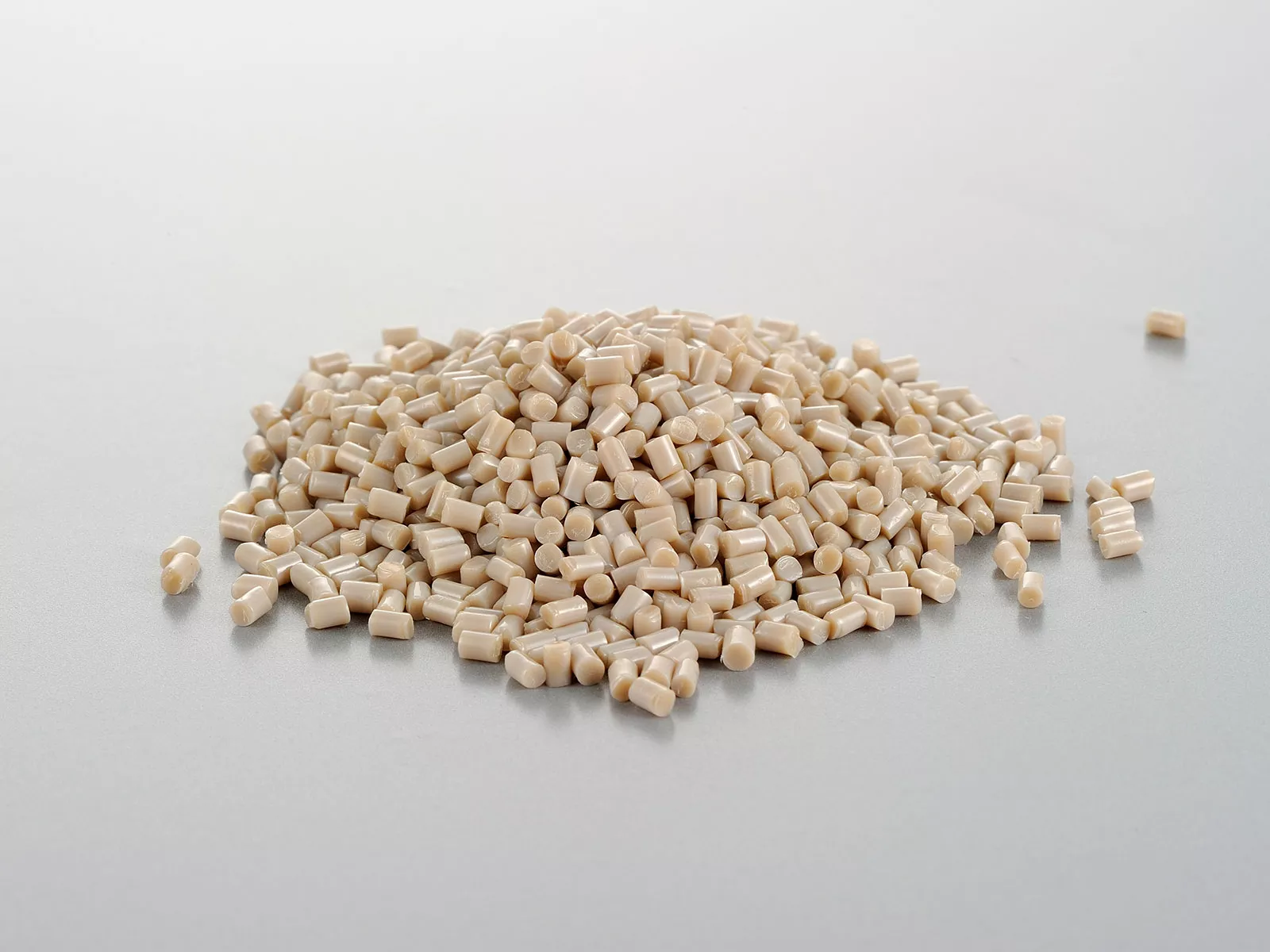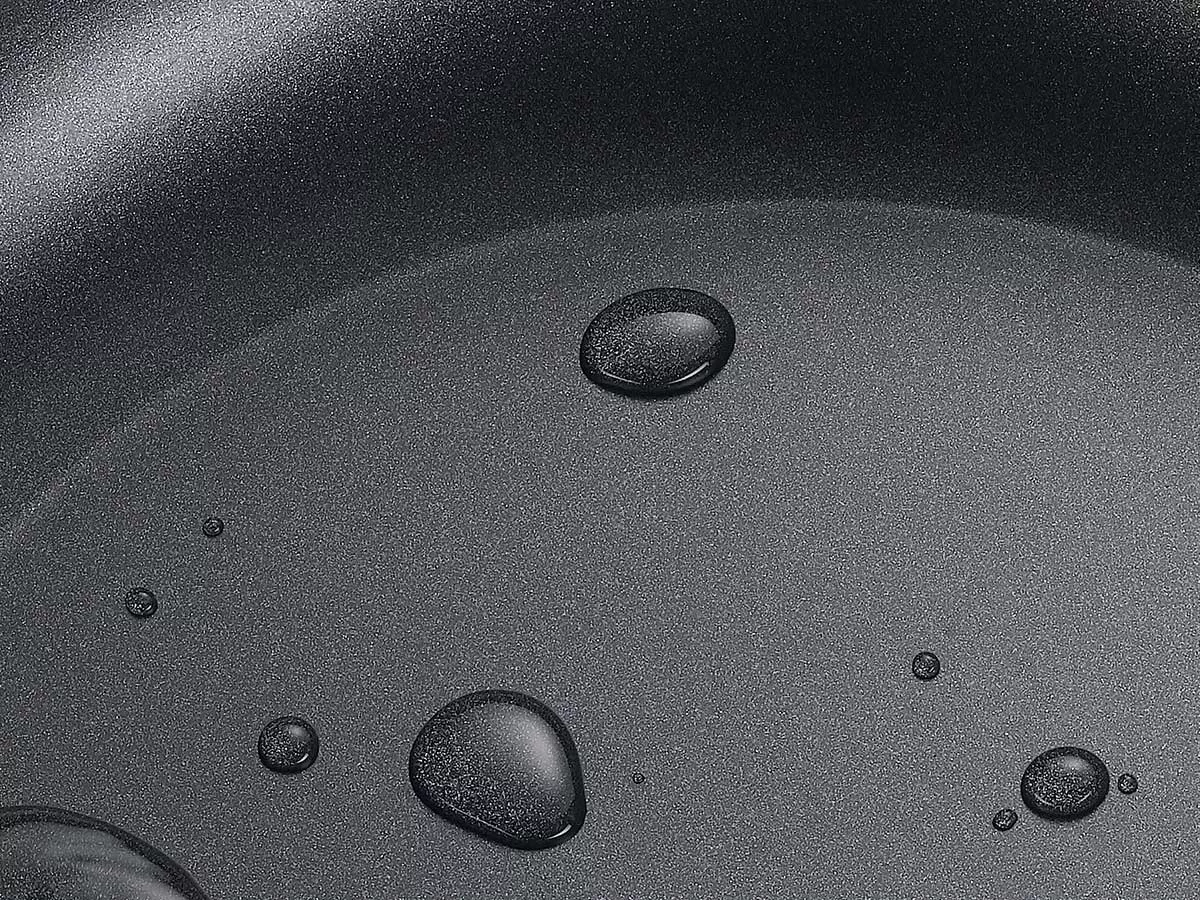Non-stick coatings are surface treatments applied to cookware, bakeware, and various other products to prevent food, liquids, or other materials from sticking to the surface. These coatings create a slippery, low-friction layer that makes it easier to release contents and simplifies cleaning.
Today, non-stick coatings are widely used not only in cookware but also in various industrial and consumer applications, including bakeware, food processing equipment, conveyors, medical devices, and automotive parts. Their ability to reduce friction and prevent sticking makes them invaluable in many industries.
Traditional Single-Layer Coatings
For decades, the go-to non-stick coating for cookware and other applications was polytetrafluoroethylene (PTFE), more commonly known as Teflon. This synthetic polymer provided a nearly frictionless surface that made cooking and cleaning a breeze. However, concerns arose regarding the safety of PTFE coatings, particularly when heated to very high temperatures.
As noted by
Healthline, above 570°F (300°C), Teflon coatings may begin to break down, releasing potentially toxic fumes. While the risks are minimal at normal cooking temperatures, the possibility of overheating has led some consumers to seek alternative options.
Beyond potential safety issues, traditional single-layer PTFE coatings also tend to be less durable than newer multi-layer systems. The non-stick performance can degrade over time as the coating becomes scratched or worn, requiring special care and eventual replacement of the cookware.
Rise of Multi-Layer Non-Stick Coatings
While traditional single-layer non-stick coatings like Teflon revolutionized cookware, they had limitations in terms of durability and safety concerns over time. To address these issues, manufacturers developed advanced multi-layer coating systems. As described in
Sciencedirect, "The use of multilayer coatings exhibits benefits in modifying stresses, enhancing substrate adhesion and improving the resistance for crack propagation." By combining different material layers, each contributing unique properties, multi-layer non-stick coatings provide superior performance.
The basic structure involves an primer layer for adhesion to the substrate, a midcoat layer(s) to enhance non-stick properties and durability, and an outer topcoat layer optimized for release and scratch resistance. This multi-layer approach allows engineers to tune the coating for specific applications by adjusting the composition and thicknesses of each layer.
Materials Used in Multi-Layer Non-Stick Coatings
Multi-layer non-stick coatings are engineered using a combination of advanced materials to optimize performance and durability. The most common materials include:
Polytetrafluoroethylene (PTFE): Also known as Teflon, PTFE has been the gold standard for non-stick coatings for decades due to its exceptional release properties. In multi-layer systems, it is often used as the top layer to provide the primary non-stick surface.
Source
Ceramic Coatings: Ceramic-based coatings are an increasingly popular alternative to PTFE, offering improved heat resistance and durability. In multi-layer systems, ceramic layers can provide reinforcement and added scratch resistance.
Metals: Various metals like aluminum, stainless steel, and anodized aluminum are used as base layers or intermediate reinforcement layers. They provide structural integrity, heat distribution, and corrosion resistance.
Proprietary Compounds: Many cookware brands develop their own proprietary multi-layer coating formulations by combining ceramics, polymers, and other materials to achieve unique performance characteristics like enhanced browning or easy release of baked goods.
How Multi-Layer Coatings Work
Multi-layer non-stick coatings are engineered to provide enhanced performance and durability compared to traditional single-layer coatings like Teflon. Each layer in the system serves a specific purpose, working together to create an optimized non-stick surface.
The base layer is typically a primer that promotes adhesion to the underlying substrate, often made from a conductive metal like aluminum or stainless steel. On top of this is an electroplated reinforcing layer, commonly using materials like nickel or chromium alloys. This layer improves corrosion resistance and provides a smooth foundation for the subsequent non-stick layers.
The key non-stick layers are then applied, frequently using a combination of polytetrafluoroethylene (PTFE) and reinforced ceramic coatings. As stated by
Misen, "anywhere from one coat to as many as four coats of PTFE may be applied" to achieve the desired non-stick properties. These PTFE layers are incredibly slick and durable at high temperatures.
Ceramic reinforcement layers add hardness and abrasion resistance to the non-stick coating. Some systems also incorporate additional layers like decorative color coats or clear protective top coats. By combining complementary materials in a multi-layer structure, the coating can deliver superior release properties, scratch resistance, and longevity compared to single-layer alternatives.
Increased Durability and Longevity
One of the primary advantages of multi-layer non-stick coatings is their significantly enhanced durability and longevity compared to traditional single-layer alternatives. While single-layer PTFE (Teflon) coatings typically last around 3 years and ceramic coatings around 2 years before degradation
(Source), multi-layer systems can easily double or triple that lifespan.
The layered construction, with each layer serving a specific purpose, creates a highly resilient and robust non-stick surface. The outer layers are designed to be scratch-resistant and withstand the rigors of everyday use, while the inner layers provide exceptional release properties. This synergistic combination results in cookware and other products that maintain their non-stick performance for many years, even with frequent use.
Furthermore, multi-layer coatings are less prone to flaking, peeling, or chipping, issues that commonly plague single-layer non-stick surfaces over time. The layered structure allows for better adhesion to the substrate material, preventing delamination and ensuring long-lasting performance.
Improved Safety Profile
One of the primary advantages of multi-layer non-stick coatings is their improved safety profile compared to traditional single-layer coatings like Teflon (PTFE). Older PTFE-based coatings have faced scrutiny due to potential health concerns, particularly when overheated or damaged, as they can release toxic fumes and particles.
In contrast, modern multi-layer systems often incorporate safer materials like ceramic or anodized aluminum in their outer layers. These alternatives have a much lower risk of emitting harmful substances, even at high temperatures. Additionally, many multi-layer coatings are designed to meet stricter regulations and safety standards, making them a more environmentally-friendly choice for both consumers and manufacturers. By combining different materials in a strategic layered structure, manufacturers can optimize for both performance and safety, addressing previous concerns associated with older non-stick technologies.
Source
Optimizing Performance Characteristics
One of the key advantages of multi-layer non-stick coatings is the ability to optimize the performance characteristics for specific applications. By carefully selecting and combining different materials in each layer, manufacturers can tailor the coating system to meet the unique demands of various products and industries.
For instance, in the cookware industry, the outer layers can be designed for enhanced heat resistance and abrasion protection, while the inner layers provide exceptional non-stick properties. This allows for high-performance cooking surfaces that can withstand the rigors of daily use while ensuring effortless food release and easy cleaning.
(Source)
In industrial settings, such as conveyor systems or machinery components, the multi-layer coatings can be engineered to resist harsh chemicals, high temperatures, and extreme wear. The outer layers can be formulated with robust materials like ceramics or metals, while the inner layers provide the necessary lubrication and non-stick properties, ensuring smooth operation and minimizing maintenance requirements.
The versatility of multi-layer non-stick coatings also extends to medical devices, where they can be tailored to meet stringent biocompatibility and sterilization standards. By combining materials with specific chemical resistances and low surface energies, these coatings can facilitate the easy release of medical components while ensuring compatibility with various sterilization processes.
Cookware and Bakeware Applications
One of the primary applications for multi-layer non-stick coatings is in high-end cookware and commercial bakeware. Top brands like GreenPan (
Source) utilize proprietary multi-layer coatings like Thermolon to provide superior non-stick performance and durability over traditional single-layer coatings.
The multi-layer design allows manufacturers to optimize each layer for specific properties. An exterior layer may be engineered for scratch and abrasion resistance, while interior layers focus on maximizing non-stick capabilities and safety. This results in cookware that maintains excellent food release for years, even with regular use of metal utensils.
For commercial bakeware used in restaurants and bakeries, multi-layer coatings prevent sticking and buildup of baked-on residues. This increases the lifespan of baking sheets and pans, reducing frequent replacements. The enhanced durability of multi-layer coatings provides a longer return on investment versus cheaper single-layer alternatives.
Industrial and Specialty Applications
Beyond cookware and bakeware, multi-layer non-stick coatings have found numerous applications in industrial and specialty products. The enhanced durability, corrosion resistance, and tailored performance characteristics make these coatings ideal for demanding environments.
One major application is industrial equipment like conveyor belts, chutes, hoppers, and more. The non-stick properties facilitate smooth flow of materials and easy cleaning, improving efficiency. As an example,
a Reddit user discusses how PTFE-based multi-layer coatings enable better material handling compared to single-layer options.
In the automotive industry, multi-layer non-stick coatings are used on components like cylinder liners, piston rings, and fuel system parts. The low-friction surfaces increase fuel efficiency and reduce wear. Medical device manufacturers also leverage these coatings on instruments, implants, and equipment to improve biocompatibility and cleanability.
As technology advances, multi-layer non-stick coatings will likely see adoption in even more sectors where durability, easy-release, and tailored surface properties are advantageous. Their versatility allows optimization for unique operating conditions.
Advances and Future Trends
The non-stick coating industry is continuously evolving to meet the demands for improved safety, durability, and performance. Ongoing research efforts are focused on developing new materials and formulations that can enhance the capabilities of multi-layer coatings.
One area of innovation is the integration of nanotechnology, as highlighted in a 2024 article from
Jai Ambay Etching Process. Nanoparticles can be incorporated into coatings to improve properties like scratch resistance, non-stick performance, and heat distribution.
Additionally, companies are investing in proprietary formulations and combinations of materials to create unique multi-layer systems tailored for specific applications. These proprietary blends can optimize factors such as release properties, thermal stability, and environmental resistance.
Safety remains a top priority, with researchers exploring alternatives to traditional materials like PTFE (Teflon) that may pose health or environmental concerns. Ceramic and other inert coatings are being investigated for their potential to provide a safer, eco-friendly solution without compromising performance.
Environmental Considerations
As multi-layer non-stick coatings gain popularity, manufacturers are increasingly focused on making these advanced coating systems more environmentally friendly. Traditional single-layer PTFE (polytetrafluoroethylene) coatings like Teflon have faced scrutiny due to potential health and environmental concerns related to their production and disposal (
Source).
To address these issues, coating manufacturers are developing multi-layer formulations that reduce or eliminate PTFE, replacing it with more eco-friendly materials like ceramics, anodized aluminum, and other polymer composites. The multi-layer approach also helps minimize waste by enabling precise, thin applications of each coating material.
In addition, coating companies are implementing stricter emissions controls and sustainable manufacturing practices to reduce the environmental impact throughout the production lifecycle. As consumer and regulatory demands for greener products increase, we can expect multi-layer non-stick coatings to continue evolving with a focus on environmental responsibility.
Consumer Guidance
When shopping for multi-layer non-stick cookware, there are several key factors to consider to ensure you get a high-quality product that will perform well and last. According to reviews from
Wirecutter and
Food & Wine, you'll want to look for:
- Reputable brand with a track record of producing durable cookware using high-quality materials and multi-layer non-stick coatings.
- Thick anodized aluminum or cast aluminum construction for even heat distribution and durability.
- At least 3 layers of non-stick coating, with the inner layers providing excellent release and the outer layers protecting against scratches and abrasions.
- Oven-safe up to at least 400°F for versatility in cooking techniques.
- Comfortable, ergonomic handles that stay cool during use.
It's also wise to read customer reviews carefully, looking for comments on how well the non-stick properties hold up over time with proper care and use of safe utensils.
Conclusion
Multi-layer non-stick coatings represent a significant advancement over traditional single-layer coatings like Teflon. By combining multiple high-performance materials into an engineered coating system, manufacturers can produce non-stick surfaces that are remarkably durable, long-lasting, and optimized for specific applications.
From a safety standpoint, modern multi-layer coatings eliminate the potential issues associated with materials like PFOA used in older Teflon formulations. Ceramic, anodized aluminum, and other approved compounds provide a much safer alternative for cookware and other consumer products.
The layered structure also delivers unparalleled durability and scratch resistance compared to single coats. High-end cookware can easily withstand thousands of cooking cycles and years of use with the non-stick performance remaining intact. Industrial equipment benefits from surfaces that can handle extreme temperatures, chemical exposure, and constant abrasion.
Beyond longevity, multi-layer systems enable engineers to fine-tune the performance characteristics for specific use cases. Different materials and thicknesses in each layer can optimize factors like release properties, stain resistance, heating characteristics, and more. This flexibility drives innovation across industries from bakeware to automotive parts.
As technology continues advancing, multi-layer non-stick coatings will only become more capable, affordable, and widely adopted. Their superior safety profile and unmatched durability represent the future of non-stick materials across consumer and industrial applications.





